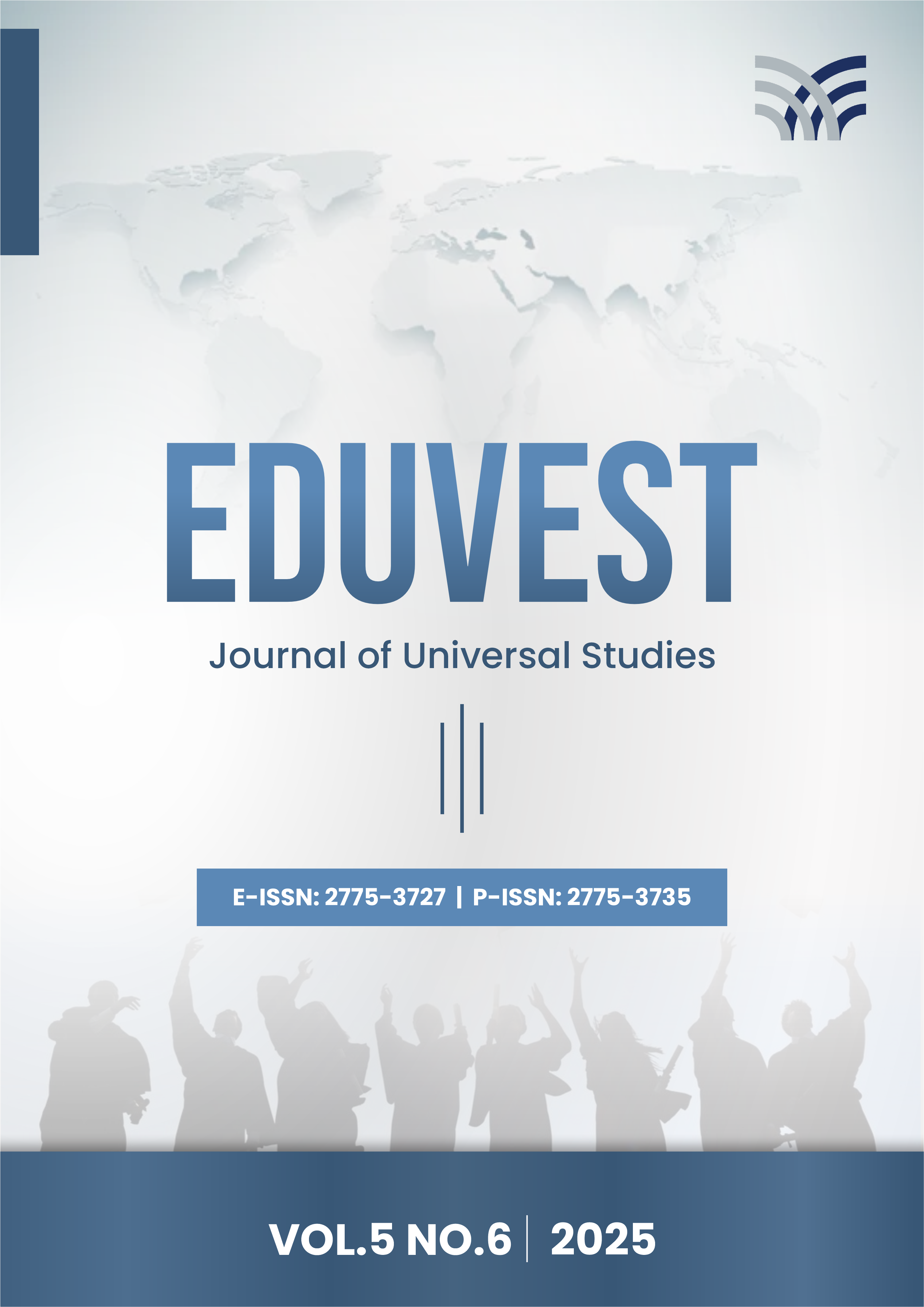Disfavit: Organic Liquid Food for Neurorehabilitation and Nutritional Fulfillment in Post-Stroke Patients with Dysphagia
DOI:
https://doi.org/10.59188/eduvest.v5i6.50298Keywords:
DisfaVit, dysphagia, post-stroke, neurorehabilitation, liquid foodAbstract
Dysphagia, or difficulty swallowing and chewing, often occurs as a result of medical conditions such as strokes that damage the cranial nerves. This condition has the potential to cause malnutrition, aspiration, and decreased quality of life, especially in the elderly. Dietary modification is important, but special products for dysphagia patients with complete nutritional content are still limited. To overcome this, DisfaVit comes as a liquid food in the form of a soluble powder that is soft, filling, high in calories, and low in sugar. Made from organic ingredients, DisfaVit uses moringa leaves, banana peels, and white snapper scales—nutrient-rich leftovers from the food industry—with the addition of soy milk powder, soy protein isolate, and guar gum. This study aims to analyze the secondary metabolite content of moringa leaves and banana peels, evaluate the characteristics, quality, and safety of DisfaVit, and identify the most in-demand formulas. Research methods include literature, experimental, and laboratory studies, with phytochemical, characteristic, safety, and organoleptic testing. The results show that DisfaVit has a high bioactive and nutrient content, is safe to consume, and the P3 formula is the most in demand. DisfaVit has the potential to be a neurorehabilitation solution and improve the quality of life of elderly post-stroke patients with dysphagia
References
Anastasia, T. (2021). The potential of Moringa leaves to overcome cancer. Click Doctor.
Aprilyani, W. (2020). Analysis of changes in viscosity of pure honey due to the addition of sugar solution, as identification of honey purity. Faculty of Tarbiyah and Teacher Training (FTK).
Aryani, T., et al. (2018). Physical characteristics, nutritional content of banana peel flour and its comparison to wheat flour quality requirements. JRST (Journal of Research and Science Technology), 2(2), 45.
Cahaya Dipura, F., et al. (2023). The role of Moringa leaf preparations (Moringa Oleifera) in the treatment of breast cancer: A literature review. Bandung Conference Series: Medical Science, 3(1).
Fadli, R. (2021). This is the need for vitamin C per day for babies to the elderly.
Gallegos, C., Turcanu, M., Assegehegn, G., & Brito-de la Fuente, E. (2023). Rheological issues on oropharyngeal dysphagia. Dysphagia, 38(2). https://doi.org/10.1007/s00455-021-10337-w
Gunawan, A. (2023). Microorganism growth test during the milking process to the fresh cow's milk reservoir in Tourism Village X.
Hariyanti, et al. (2023). Effect of extraction temperature on gelatin characteristics from fish scales Lates calcarifer and Oreochromis niloticus. JPB Marine and Fisheries, 18(2), 95–104.
Kim, H. N., & Kim, J. Y. (2021). A systematic review of oropharyngeal dysphagia models in rodents. International Journal of Environmental Research and Public Health, 18(9). https://doi.org/10.3390/ijerph18094987
Marchese, M. R., Ausili Cefaro, C., Mari, G., Proietti, I., Carfì, A., Tosato, M., Longobardi, Y., & D’Alatri, L. (2022). Oropharyngeal dysphagia after hospitalization for COVID-19 disease: Our screening results. Dysphagia, 37(2). https://doi.org/10.1007/s00455-021-10325-0
Maulana, R., et al. (2022). Marketing strategy for banana peel meatball products (Bakusang). Vol. 5(2).
Matar, N., Smaily, H., Cherfane, P., & Hanna, C. (2021). Profiling of oropharyngeal dysphagia in an acute care hospital setting. Ear, Nose and Throat Journal, 100(8). https://doi.org/10.1177/0145561320917795
Nasution, P. A., Batubara, R., & Surjanto. (2015). Tingkat kekuatan antioksidan dan kesukaan masyarakat terhadap teh daun gaharu (Aquilaria malaccensis Lamk) berdasarkan pohon induksi dan non-induksi. Peronema - Forest Science Journal, 4(1), 10–18.
Nareza, M. (2020). The role of calcium, vitamin C, and vitamin D to prevent osteoporosis and strengthen the immune system. Alodokter.
Rizki, Z., et al. (2022). Identify the number of germs on the TPC (Total Plate Count) method dispenser. Journal of SAGO, 4(1), 38–43.
Sasegbon, A., & Hamdy, S. (2017). The anatomy and physiology of normal and abnormal swallowing in oropharyngeal dysphagia. Neurogastroenterology and Motility, 29(11). https://doi.org/10.1111/nmo.13100
Soulissa, A., & Nathania, I. (2018). The efficacy of fish scales as bone graft alternative materials. Scientific Dental Journal, 1, 09–17.
Downloads
Published
How to Cite
Issue
Section
License
Copyright (c) 2025 Anak Agung Sagung Paramita Devi, Komang Kananta Candra Hariantha, Anak Agung Gde Anom Putra Asmara

This work is licensed under a Creative Commons Attribution-ShareAlike 4.0 International License.











